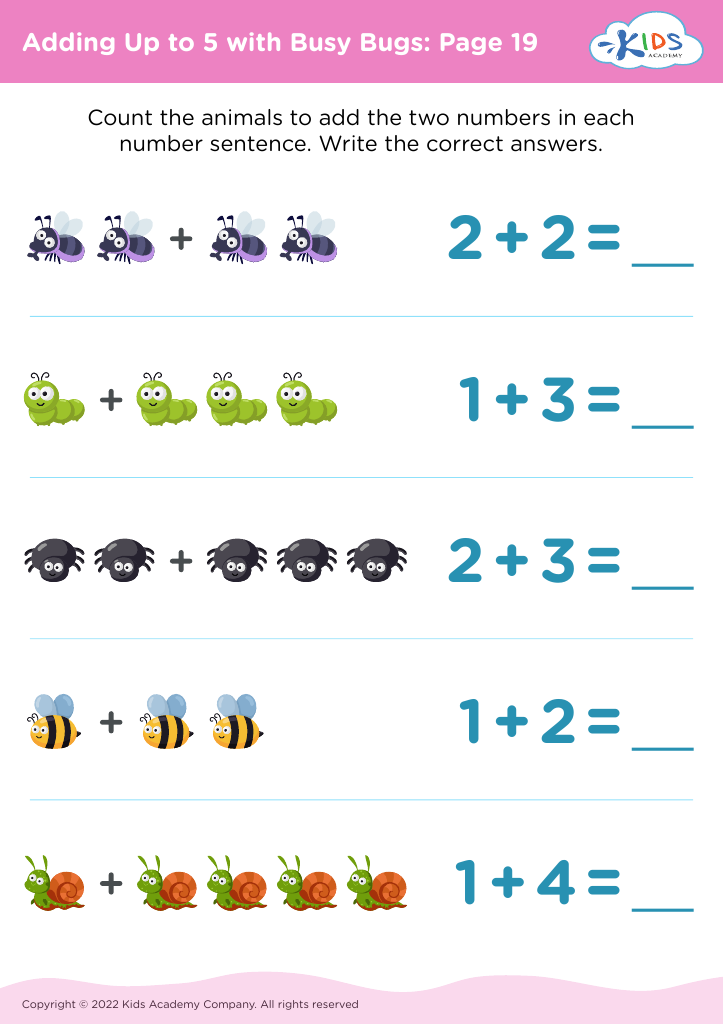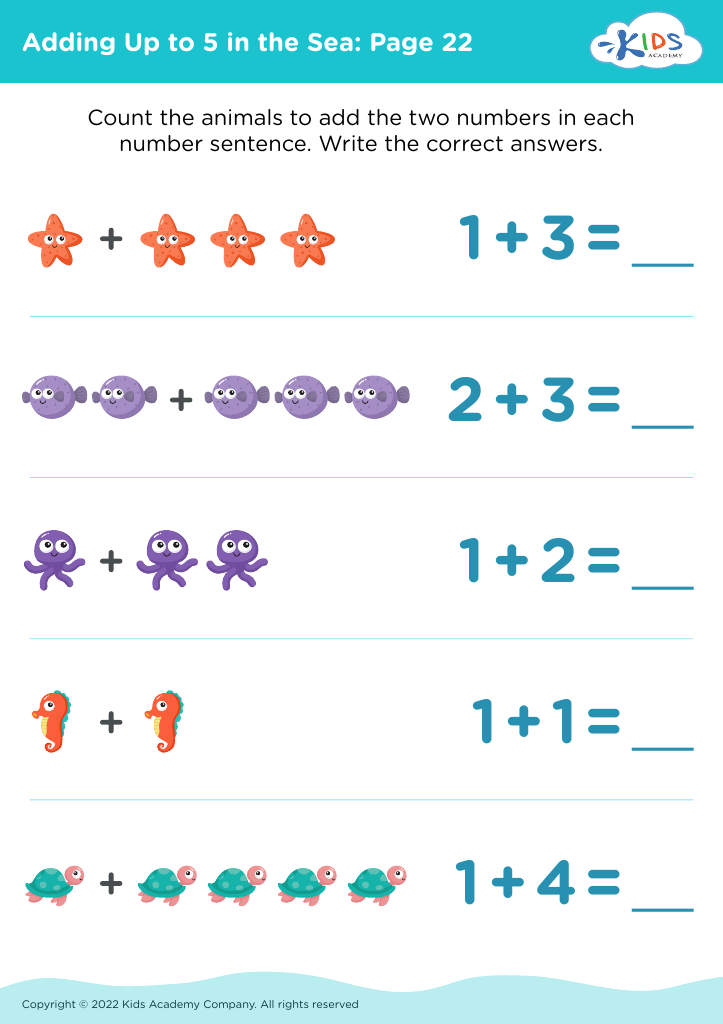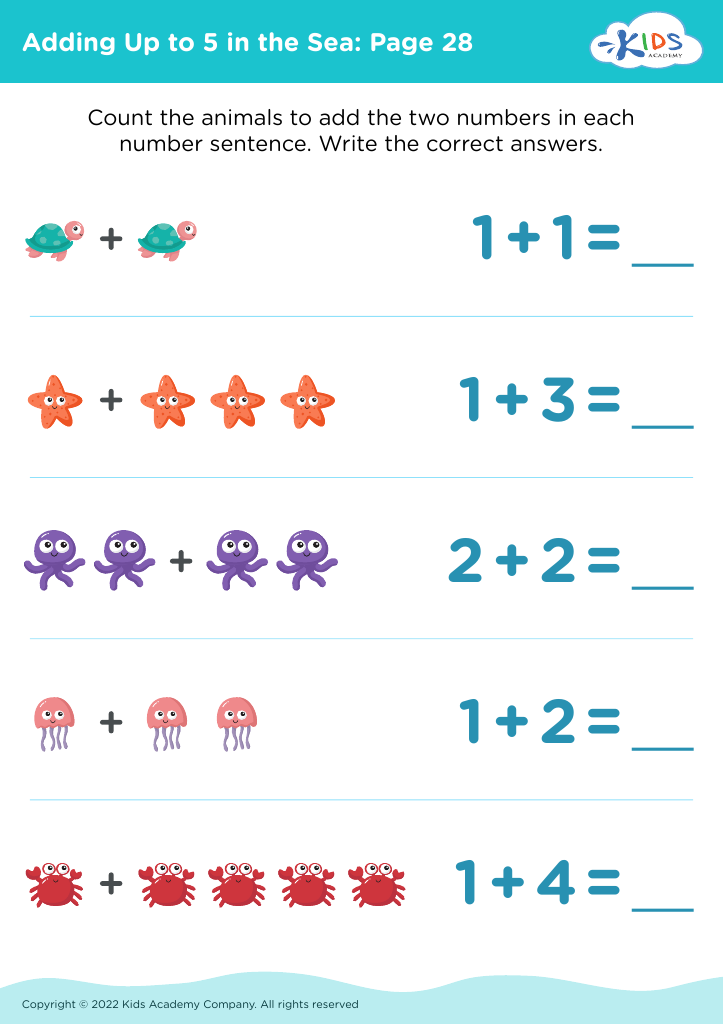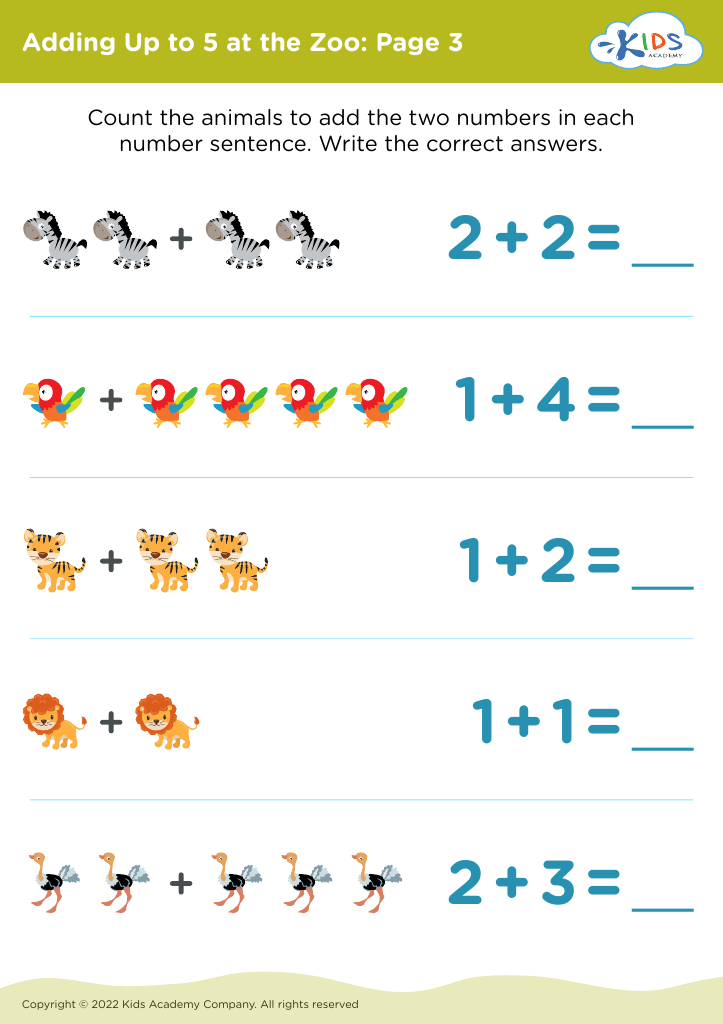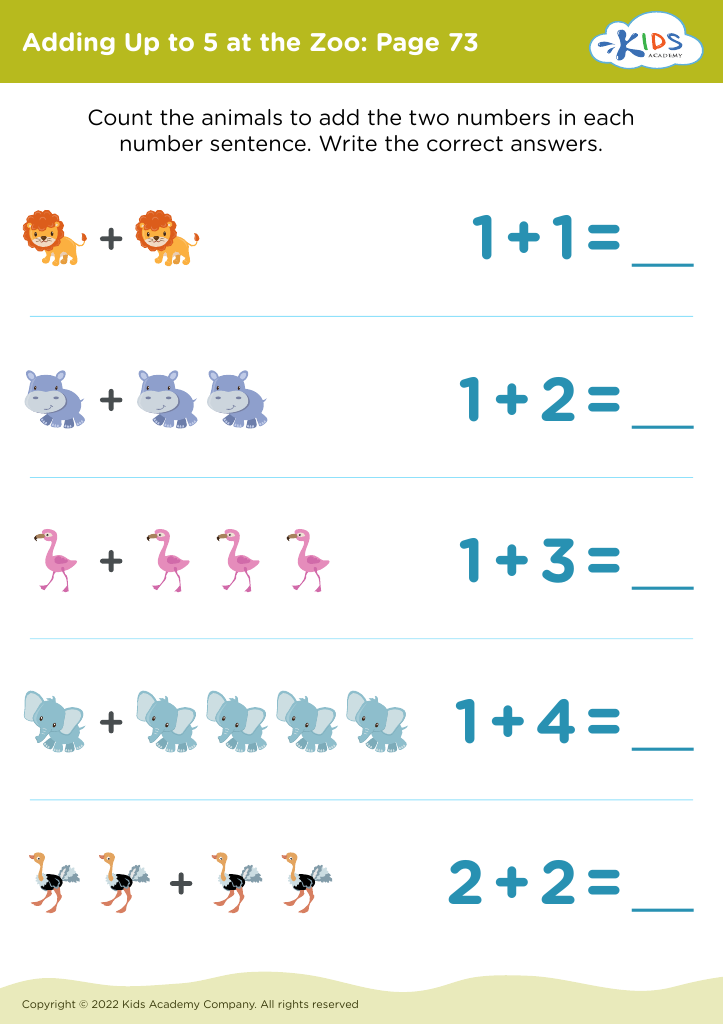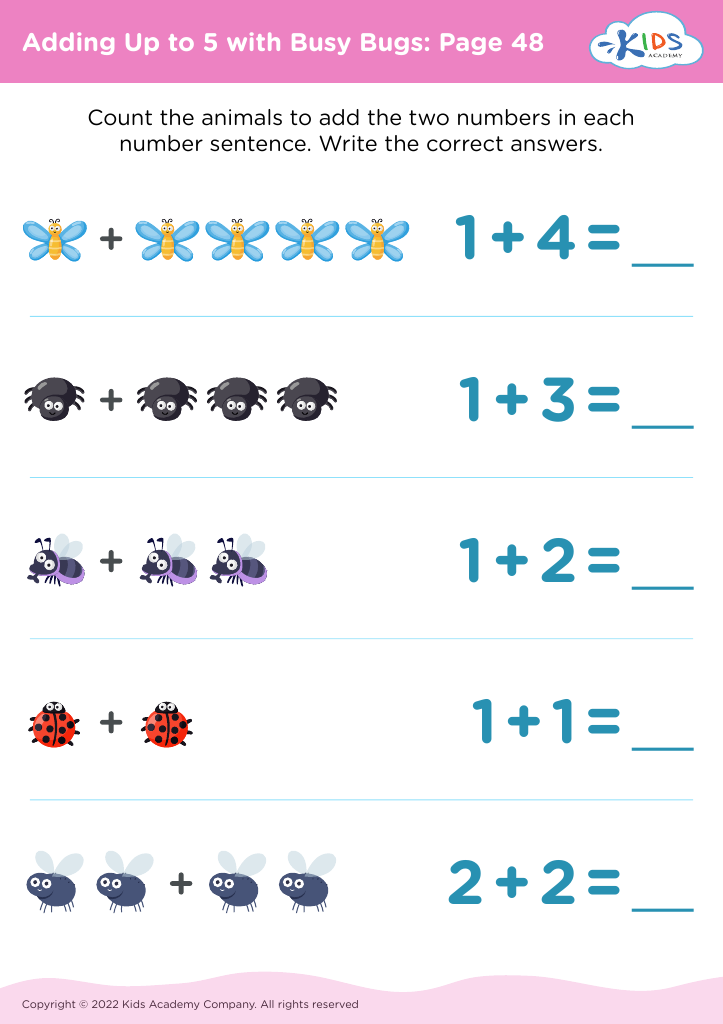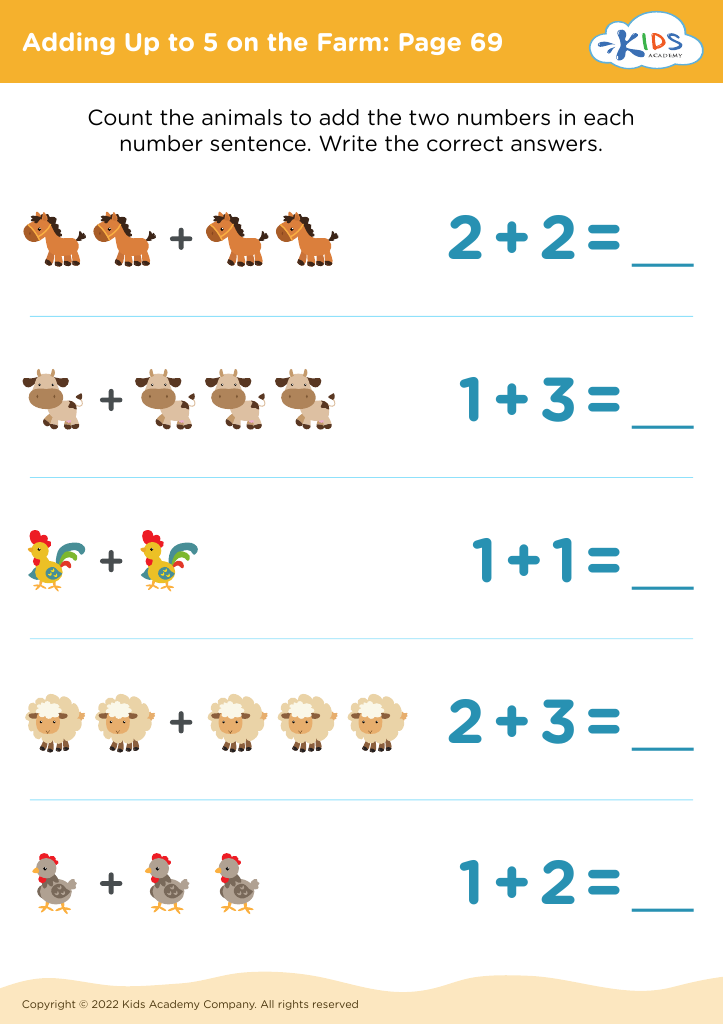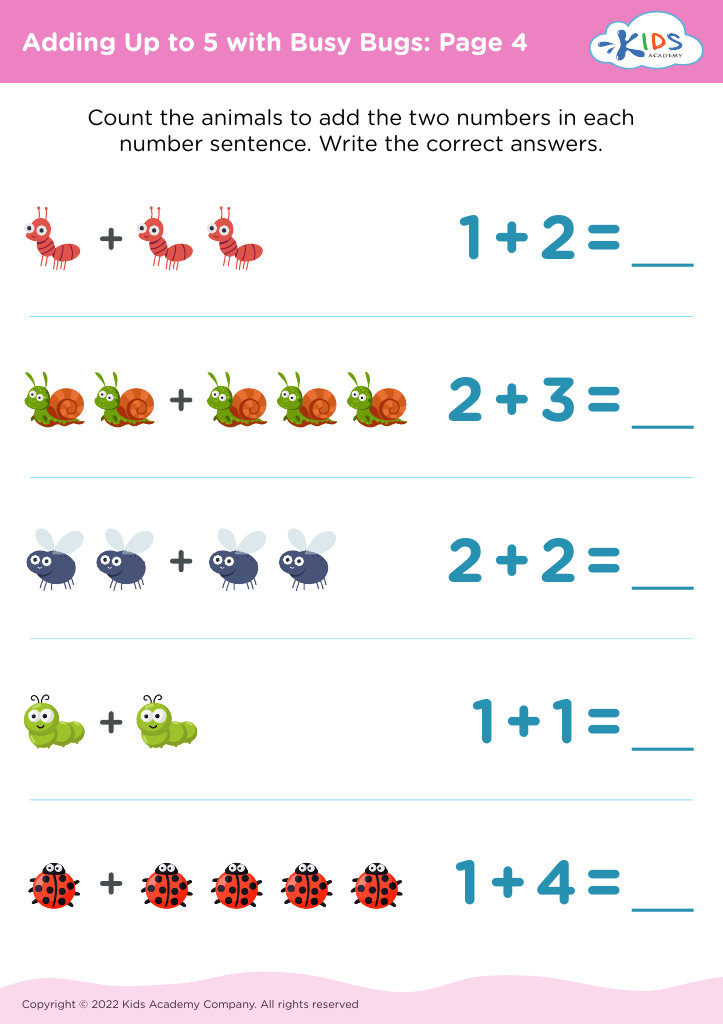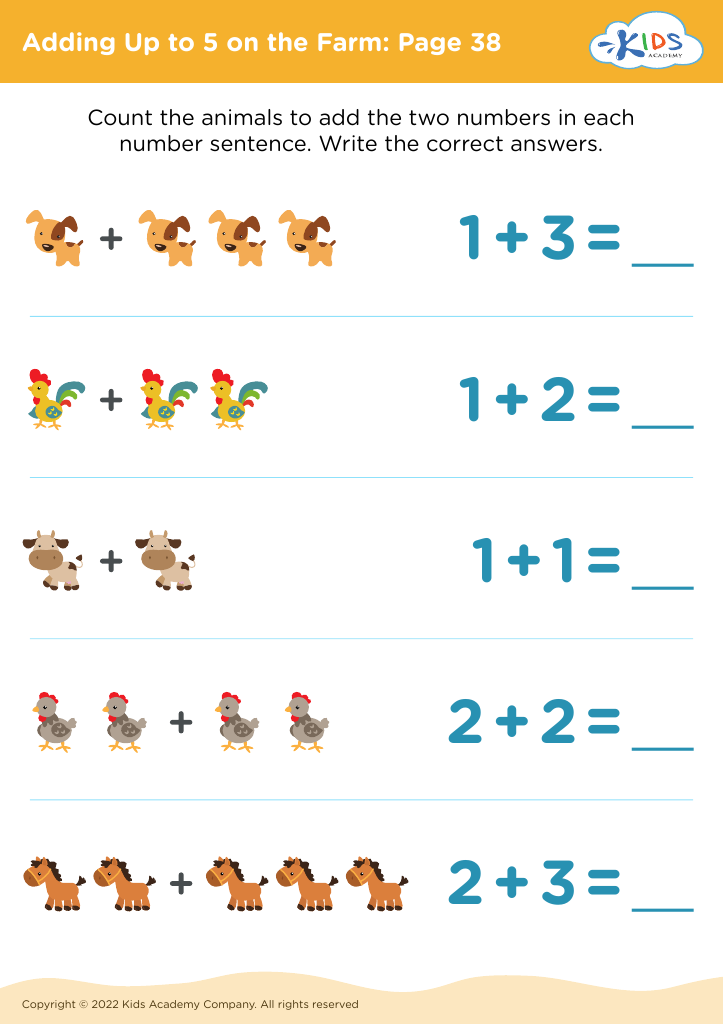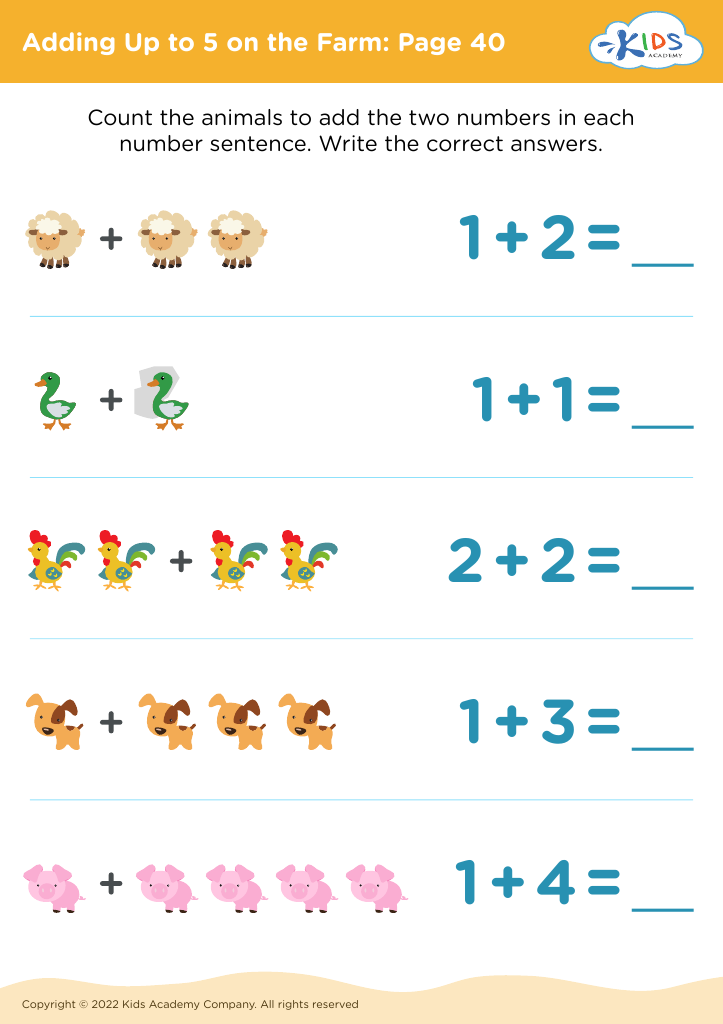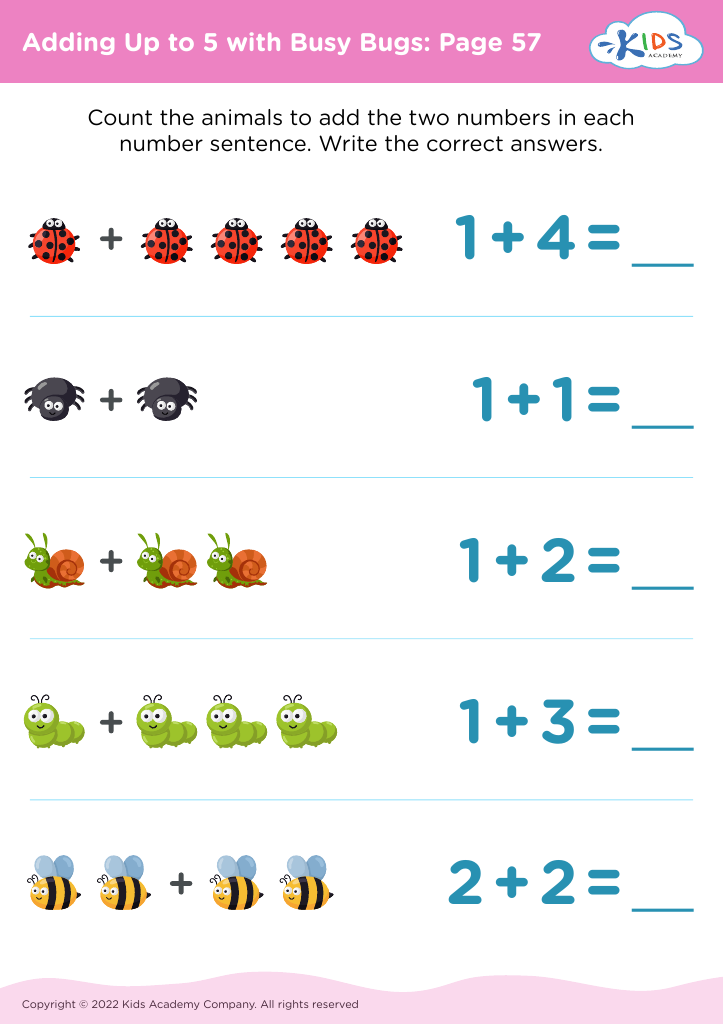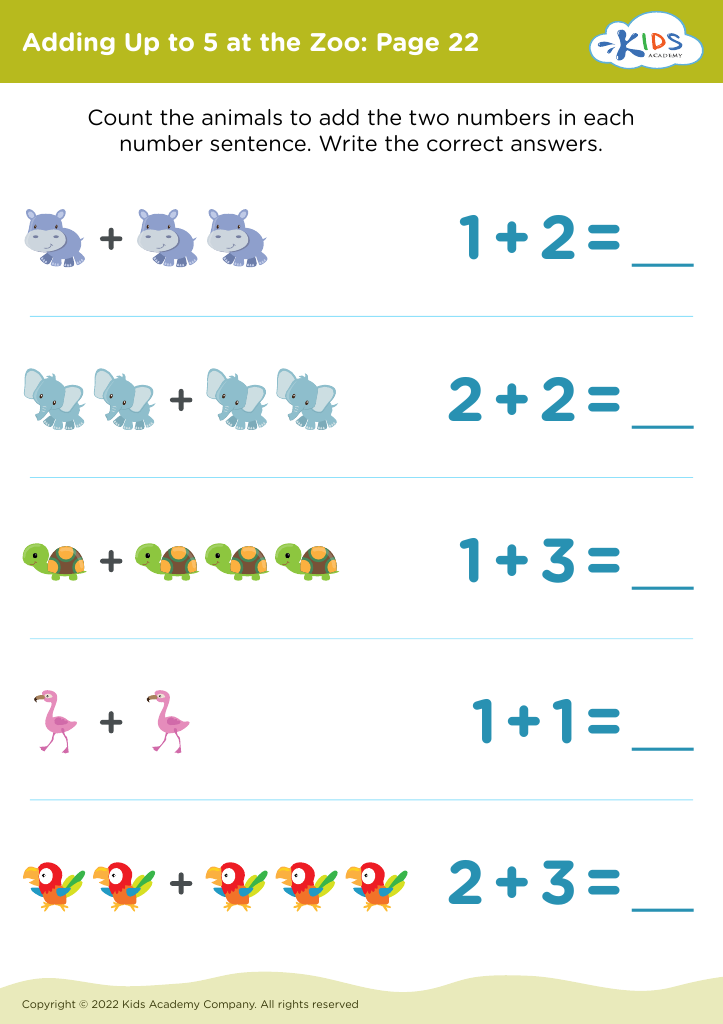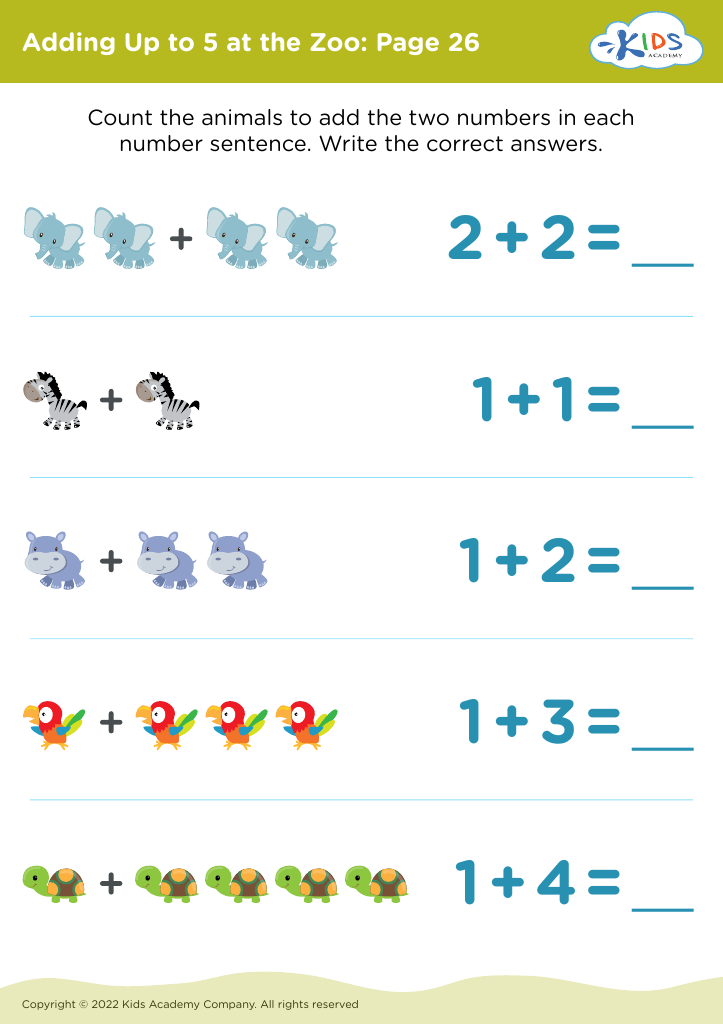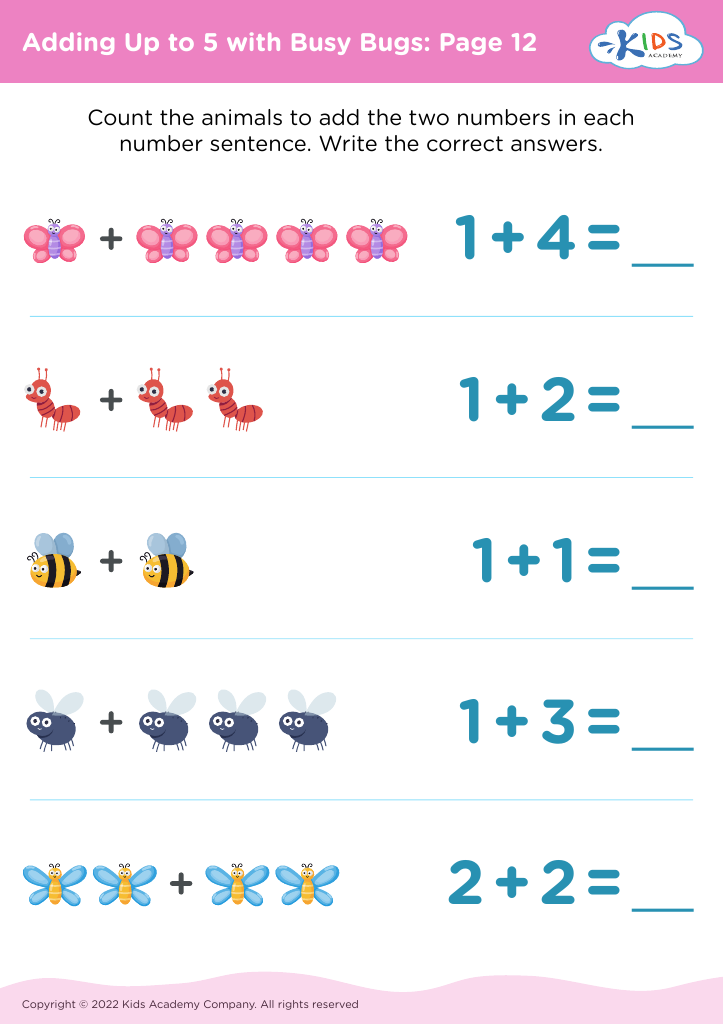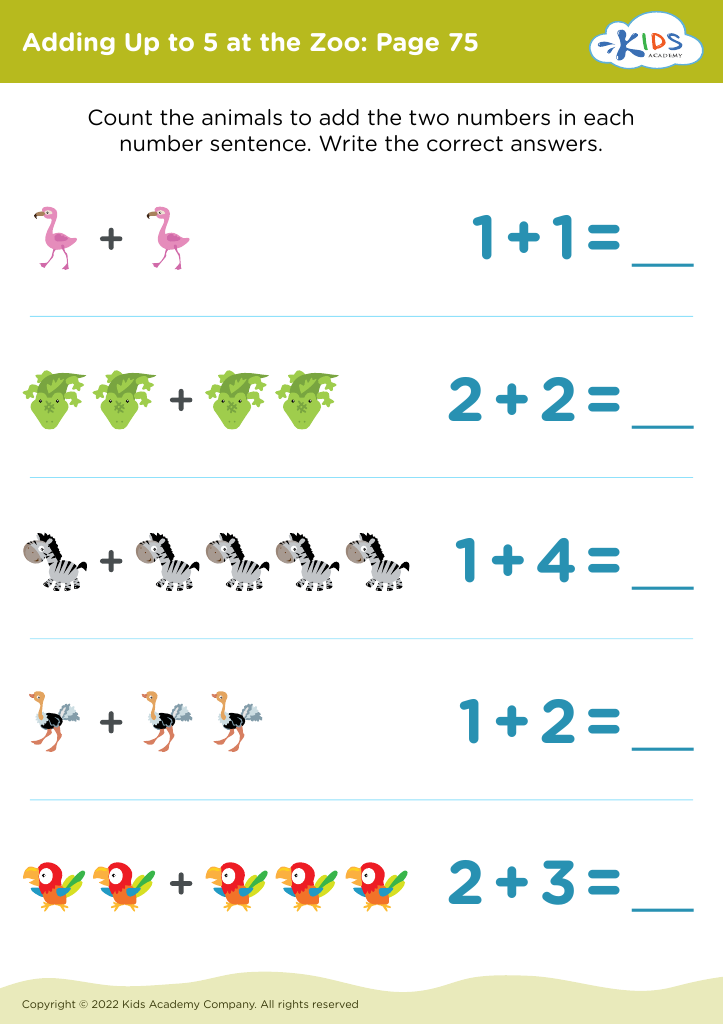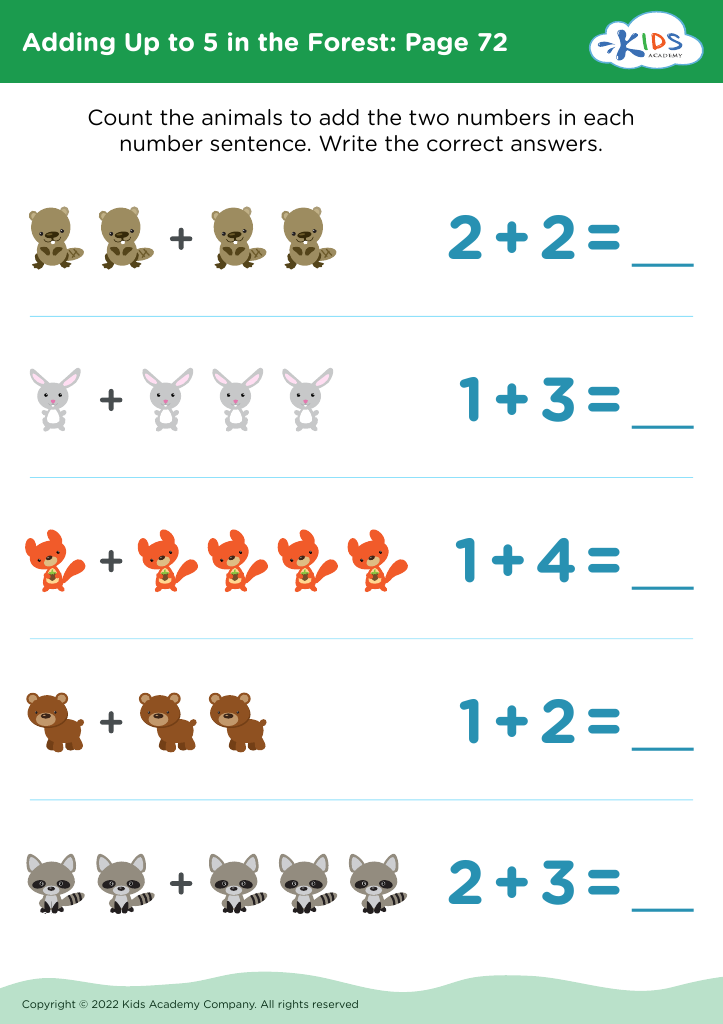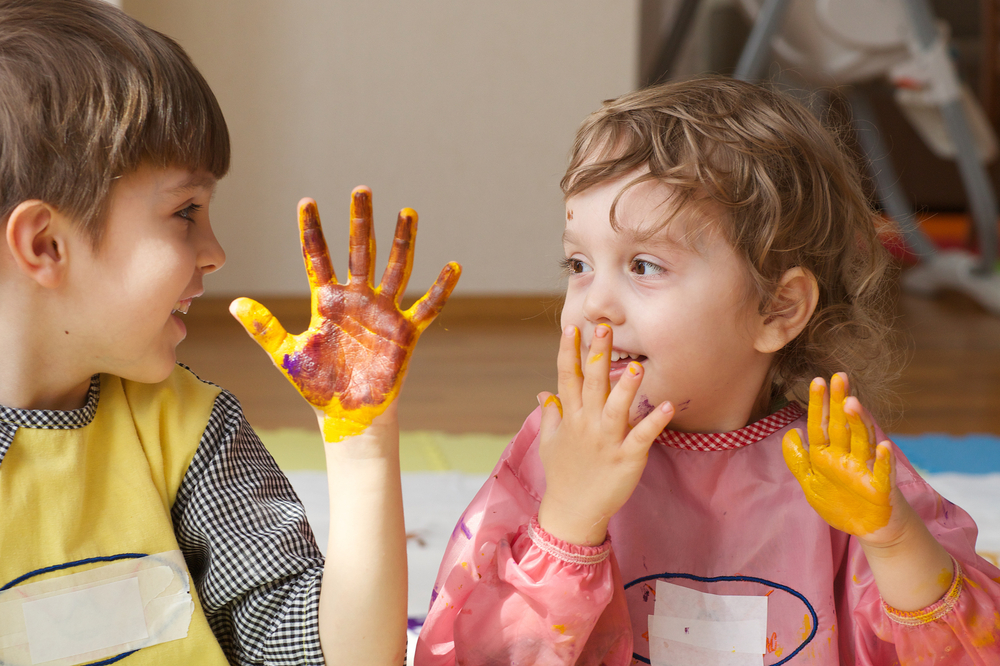Addition skills Math Worksheets for Ages 4-5
106 filtered results
-
From - To
Boost your child's math skills with our engaging Addition Skills Worksheets designed for ages 4-5. These fun and interactive resources help young learners grasp fundamental addition concepts through colorful visuals and relatable themes. Each worksheet encourages kids to practice counting and solving simple addition problems, promoting early numeracy in an enjoyable way. Tailored for preschool and kindergarten students, our addition activities foster a love for learning while building confidence in math. Explore a variety of worksheets that cater to different skill levels, ensuring every child can progress at their own pace. Get started now to set the foundation for future math success!
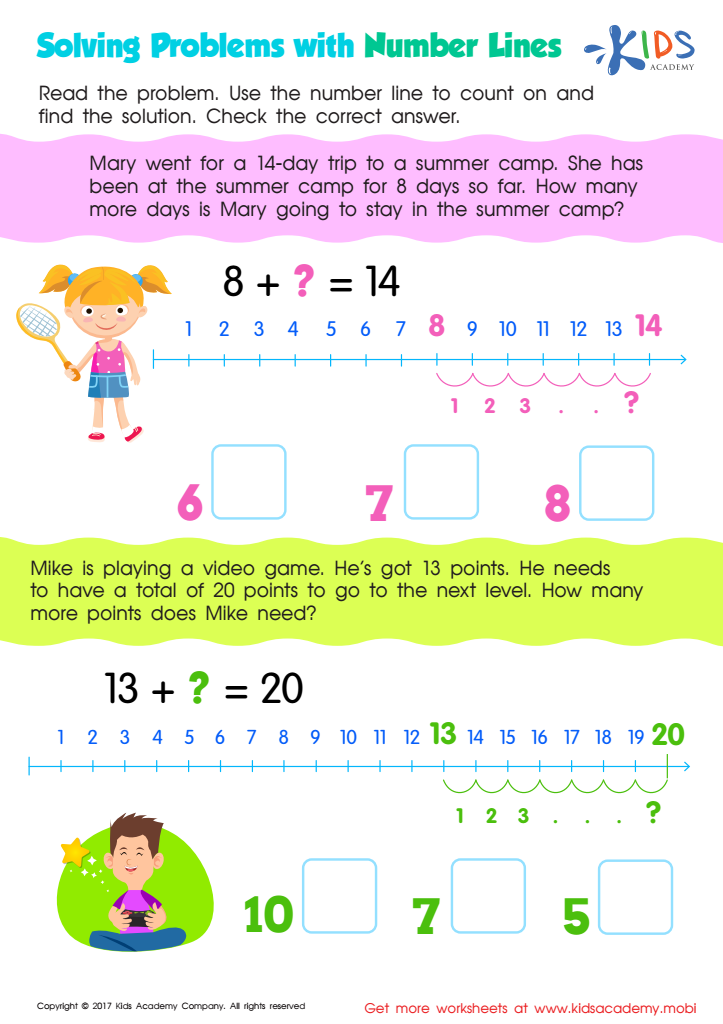

Solving Problems: Number Lines Worksheet
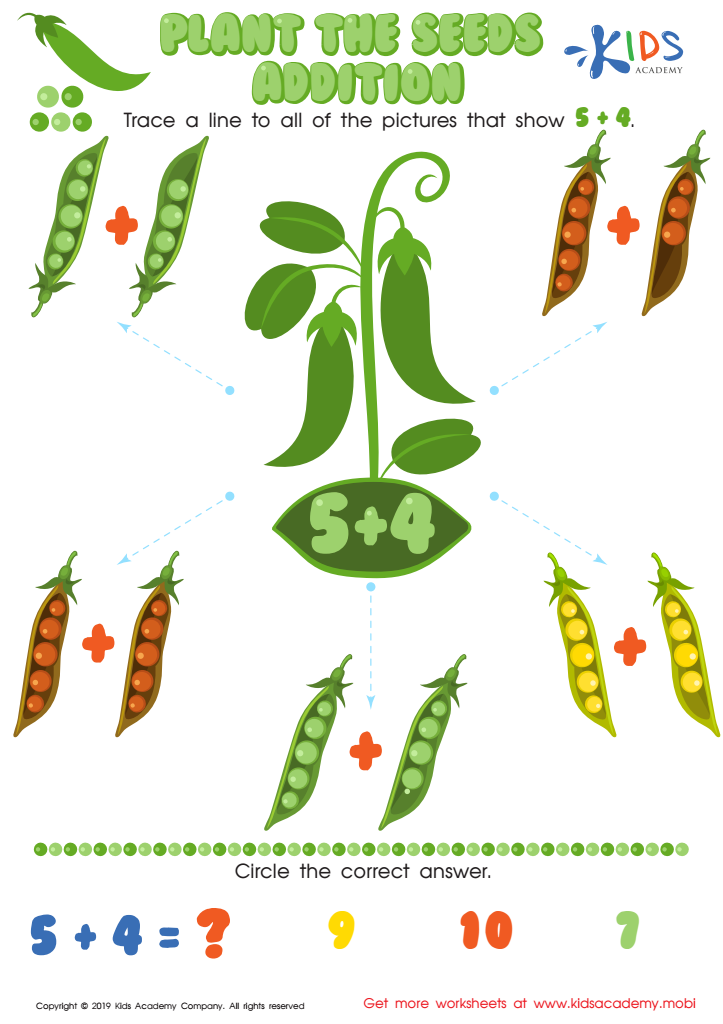

Plant the Seeds Addition Worksheet
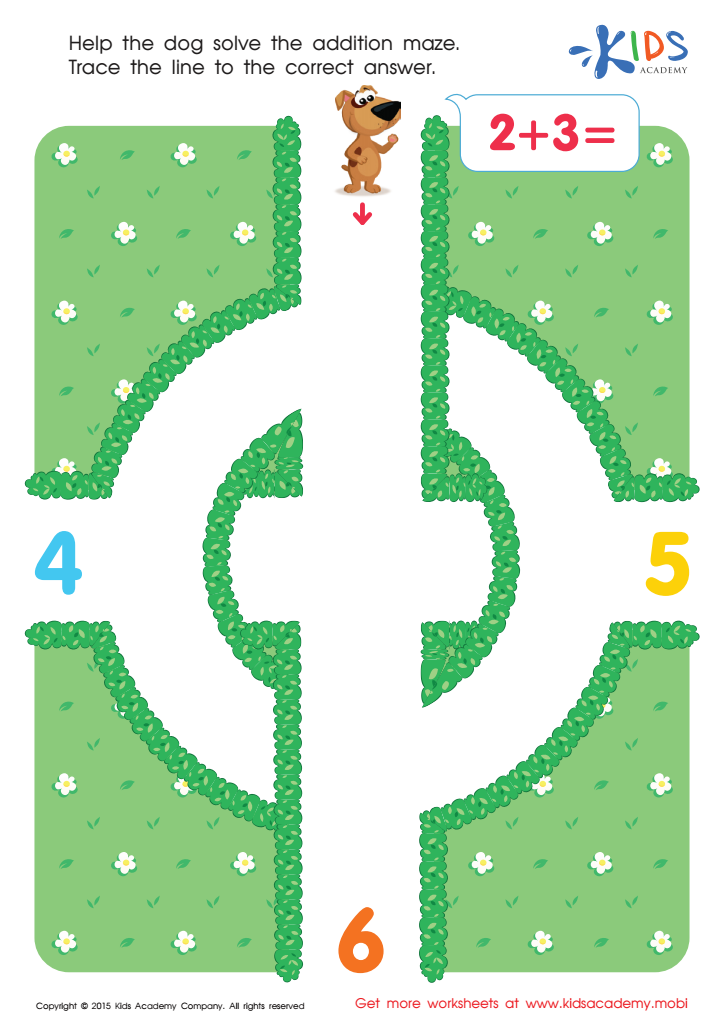

Two And Three Addition Worksheet
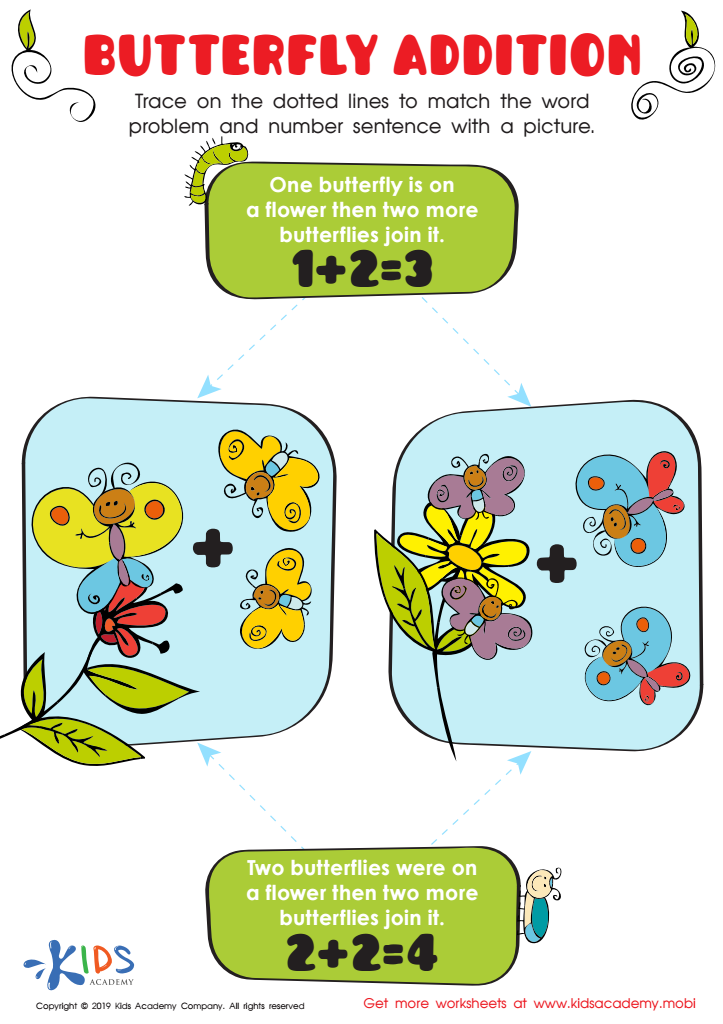

Butterfly Addition Worksheet
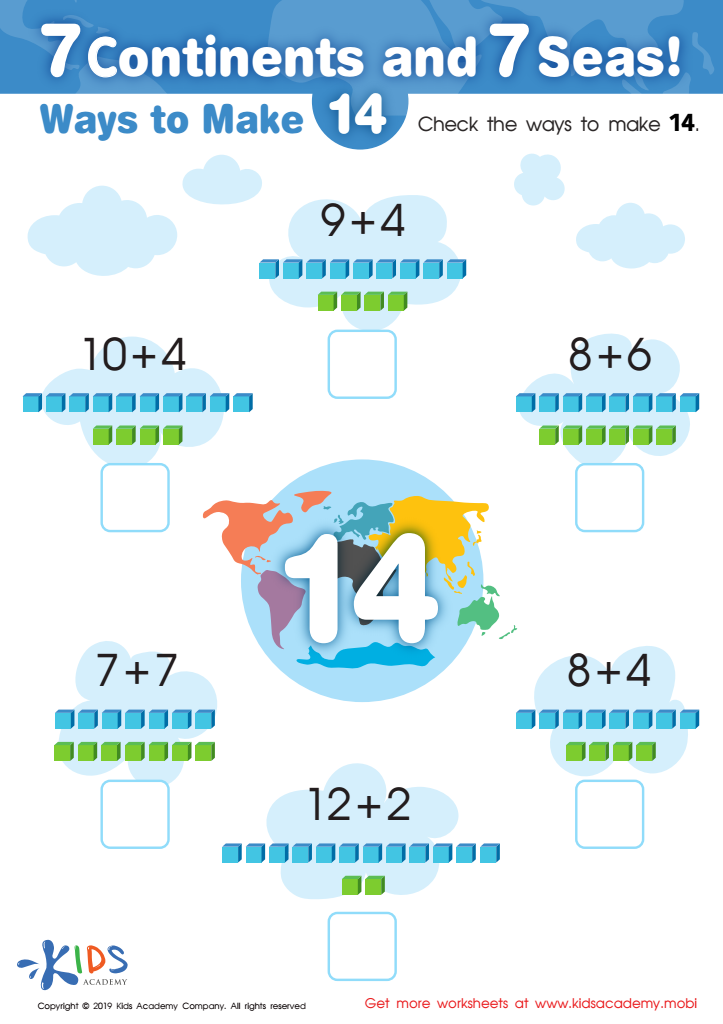

7 Continents and 7 Seas Worksheet
Addition skills are a foundational component of early math development for children aged 4-5. At this stage, children are like sponges, absorbing new information and skills that will serve as building blocks for future learning. Understanding addition not only helps them grasp basic math concepts but also enhances critical thinking and problem-solving abilities.
Parents and teachers play a vital role in nurturing these skills. Early proficiency in addition boosts a child's confidence and lays the groundwork for more complex mathematical concepts in the future. It promotes cognitive development—children learn to categorize objects, recognize patterns, and improve reasoning skills. Furthermore, early exposure to math fosters a positive attitude towards numbers and fine-tunes their ability to handle mathematical challenges later in life.
Incorporating playful activities like counting toys or using everyday scenarios to illustrate addition makes learning engaging and relatable. These experiences not only strengthen addition skills but also enhance language development and fine motor skills through hands-on activities. By actively supporting the development of addition skills, parents and teachers can ensure that children not only succeed in math but also enjoy the joy of learning as they navigate the world around them.
 Assign to My Students
Assign to My Students

